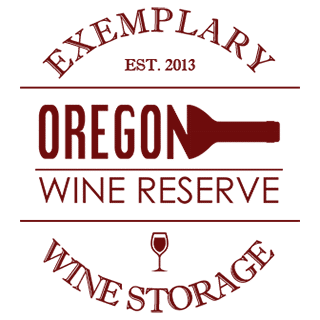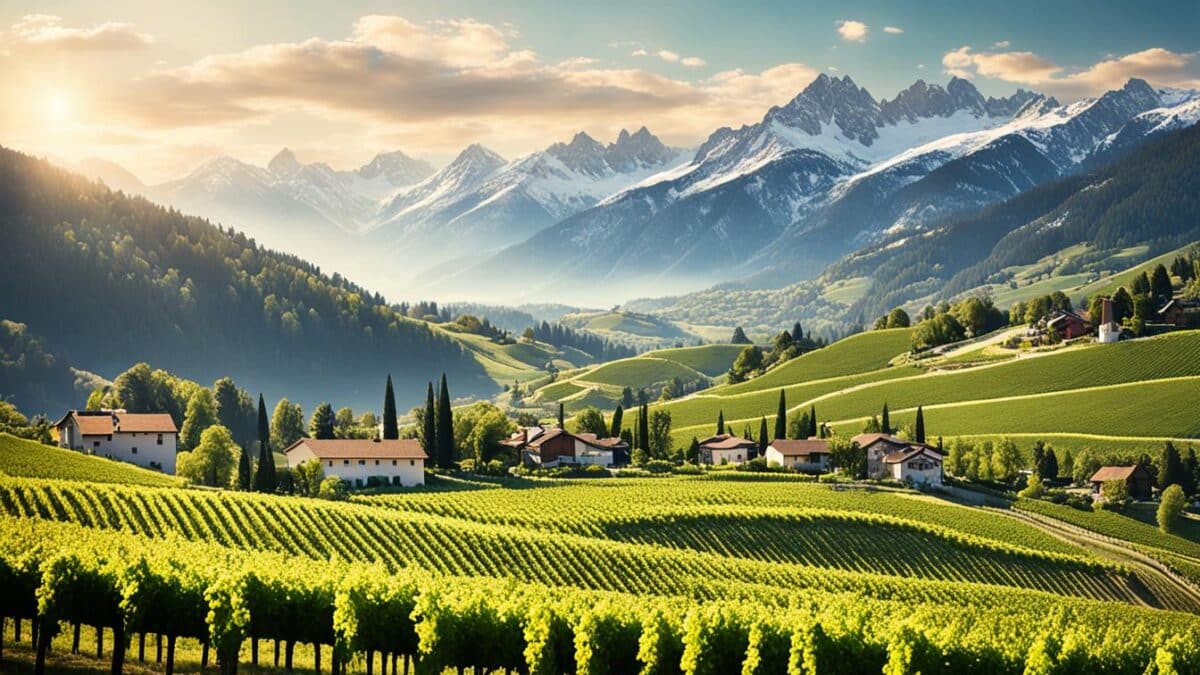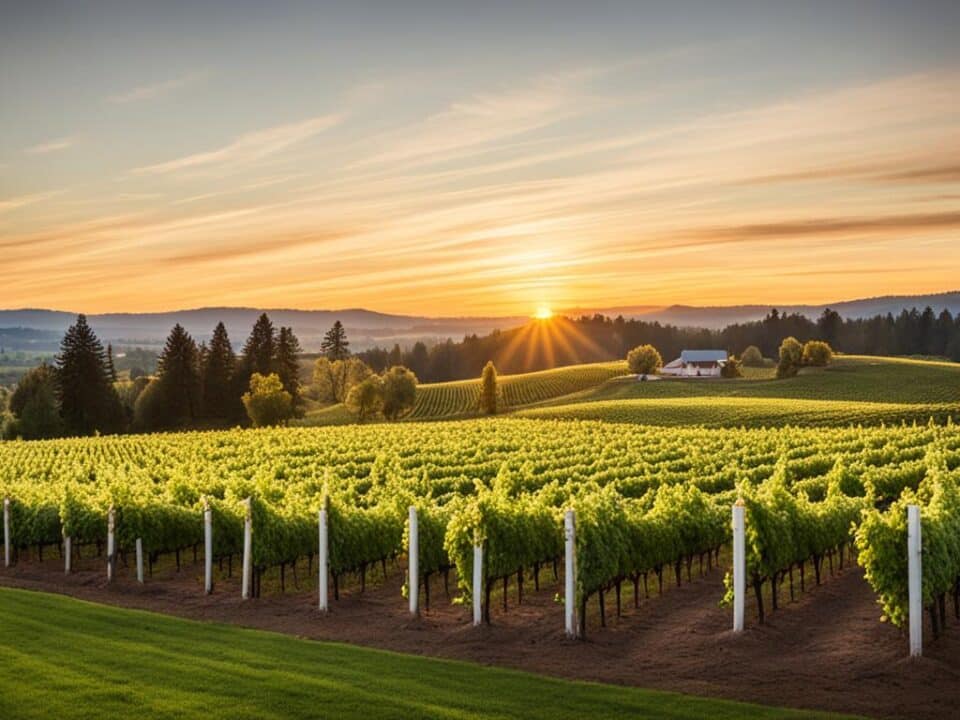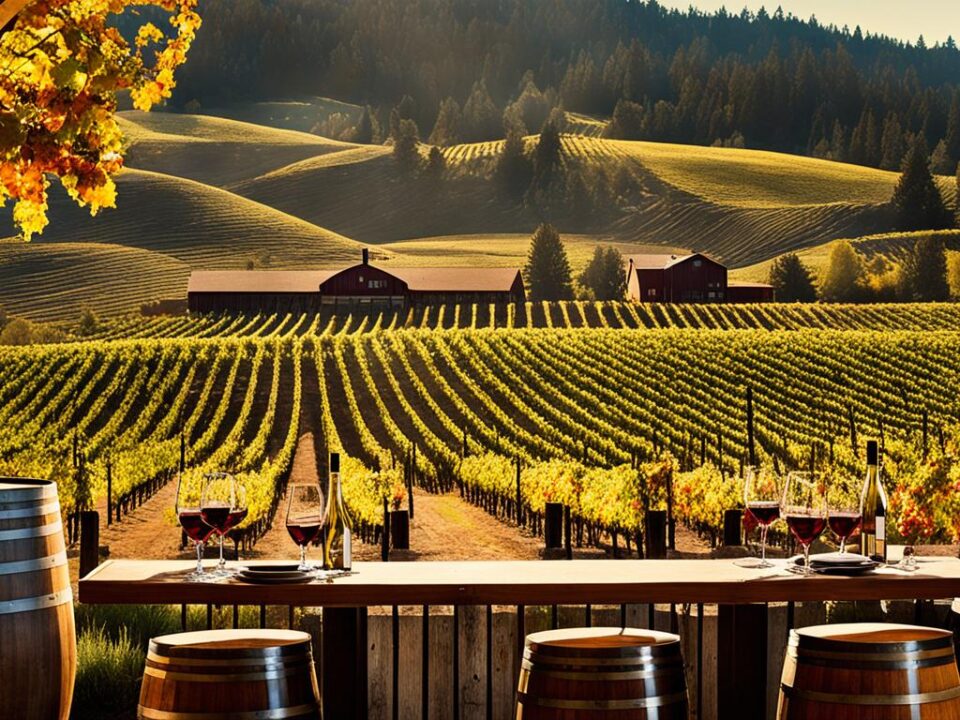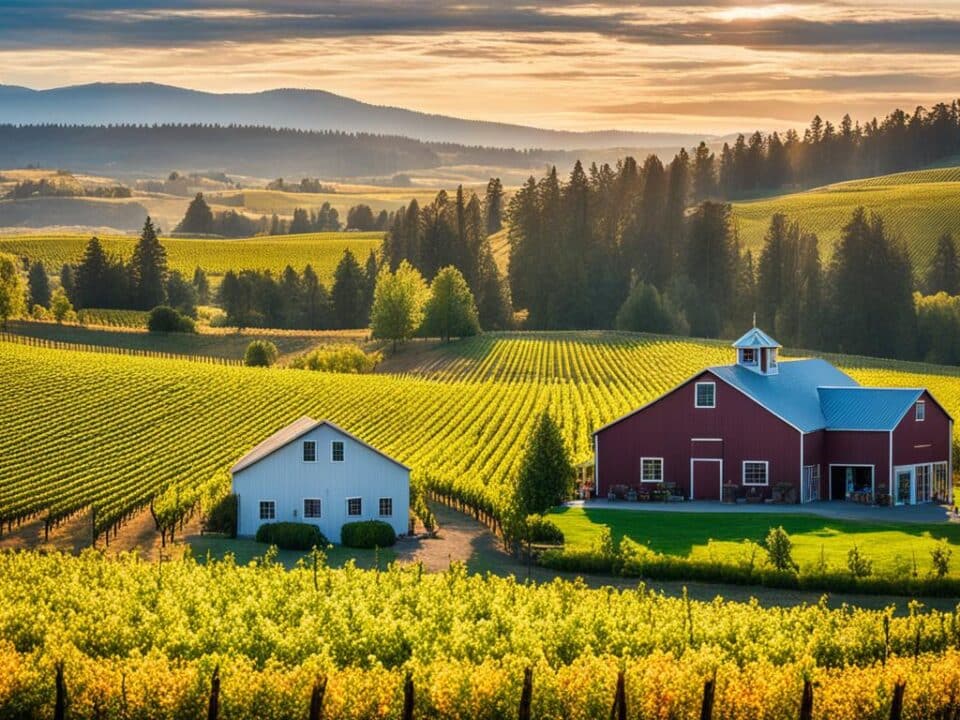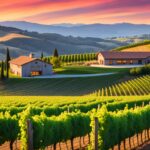
Alloro Vineyard: Exquisite Oregon Wine Experience
August 16, 2024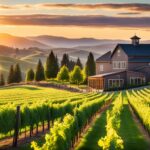
Amalie Robert Estate: Oregon’s Boutique Winery
August 16, 2024In the high mountains of Europe, a special winemaking tradition has grown. Hidden among the Alps, alpine vineyards make wines that are catching the eye of wine lovers worldwide. These mountain vineyards grow at high places and face tough conditions. They make wines that taste like their high-altitude home.
In Spain’s Sierra de la Contraviesa-Alpujarra, vineyards go up to 1,368 meters high. In France’s Savoie, cool-climate viticulture is key. These alpine wineries use their special terroir to make wines full of complexity and character. You’ll find elegant Pinot Noirs and Chardonnays, and strong reds from Italy’s Valtellina. Each wine tells the story of family-owned vineyards and artisanal winemakers who work hard to make sustainable and boutique wines in these stunning mountains.
Key Takeaways
- Alpine vineyards are located at some of the highest elevations in Europe, with the Sierra de la Contraviesa-Alpujarra in Spain reaching up to 1,368 meters.
- Cool-climate viticulture is the hallmark of these mountain wine regions, producing wines with distinct terroir-driven character.
- Alpine wineries are embracing sustainable and artisanal winemaking practices, contributing to a renewed interest in these unique mountain wines.
- Savoie, France, is a standout Alpine wine region, known for its exceptional quality and diversity of grape varieties.
- The Alps span eight countries, each with their own rich winemaking traditions and distinct regional styles.
The Wonders of Alpine Viticulture
Defying the Elements: Grape Growing at High Altitudes
Winemaking in the Alps has been a tradition for centuries, despite the tough mountain climate. Growers face extreme cold, strong winds, and snow. But, the dry air and sunlight at high altitudes help grapes ripen well and keep acidity high.
The steep vineyards need a lot of manual work. But, this hard work leads to wines of great quality. These wines show the unique taste of the mountain terroir.
Switzerland’s vineyards cover about 16,000 square miles and are in countries like France, Italy, Liechtenstein, Austria, and Germany. The Alps take up two-thirds of Switzerland, making its wines special. Swiss vineyards need about 2,000 hours of work per hectare every year.
In Switzerland, the Valais region makes almost half of the country’s wine. The main grapes are Pinot Noir, Chasselas, Gamay, and Merlot, making up 72% of the harvest. Now, Swiss winemakers make more red wine than white, with Pinot Noir being the top grape.
In the Valtellina region of Italy, Nebbiolo is over 90% of the vines. Vineyards are from 230-765 meters above sea level. Sustainable farming includes building over 2,500 kilometers of dry stone walls. This work makes wines of high quality that show the mountain terroir.
Savoie: France’s Alpine Wine Gem
In southeastern France, the Savoie region is a hidden gem for wine lovers. It has only 2,200 hectares of vineyards, making up less than 1% of France’s wine production. Yet, it’s home to over 20 unique grape varieties. These give rise to Savoie wines that are diverse and distinct.
Historically, Savoie’s wines were known for being harsh and acidic. But thanks to French alpine viticulture, they’re now more complex and age-worthy. This change is thanks to the hard work of producers.
Leading this change are artisanal producers like Jean Yves Péron. They’re showing off the best of Savoie’s terroir-driven winemaking. By using new techniques and focusing on sustainability, they highlight the unique traits of obscure grape varieties like Jacquère, Altesse, and Mondeuse.
Savoie was once overlooked, but now its budget-friendly cuvées are getting attention. Wine lovers are discovering the region’s high-altitude vineyards and passionate producers. This makes Savoie’s wine scene a must-visit.
| Wine | Grape Variety | Producer | Price |
|---|---|---|---|
| Domaine Bechtold Cremant D’Alsace | 80% Chardonnay, 20% Auxerrois | Domaine Bechtold | $25.99 |
| Blanc de Morgex et de la Salle | Prié Blanc | Ermes Pavese | $29.99 |
| Chardonnay “Fonteinelle” | Chardonnay | Domaine de la Pinte | $34.99 |
| Trois Cepages | Pinot Noir, Trousseau, Poulsard | Domaine Du Pelican | $28.99 |
| Domaine Blanc Apremont | Jacquère | Domaine Willy Blanc | $21.99 |
Valle d’Aosta: Italy’s Alpine Treasure Trove
In the Italian Alps, the Valle d’Aosta region is a hidden gem in winemaking. It’s isolated, keeping its unique winemaking culture and ancient grape varieties safe. These grapes have been around for centuries.
The region was spared from the phylloxera outbreak in the 19th century. So, it has some of the oldest vines in the world, up to 175 years old. These vines help make wines with a special taste, thanks to grapes like Petit Rouge, Furmint, and Prie Blanc.
The wines of Valle d’Aosta are similar yet unique compared to those from Savoie. Maison Vevey and other small producers make white and red blends. These blends highlight the region’s unique grapes and high-altitude conditions.
Valle d’Aosta may be small, but it’s making a big mark globally. Its wines, with ancient grape varieties and high-altitude terroir, are on top Italian wine lists in New York. They’re winning over wine lovers with their unique taste and appeal from boutique producers.
Alpine Vineyards: Exquisite Mountain Wines
Exploring the Prestigious Crus of Valtellina
The Piedmont region in Italy is famous for its top-notch Nebbiolo wines. But the Valtellina zone in Lombardy shows that Nebbiolo can also do great in the Alps’ high places. These vineyards, nestled among tall mountains, make wines that are elegant, refined, and have a bright taste. They are different from the strong and tannic wines from Barolo and Barbaresco.
The top wines from Valtellina are Valtellina Superiore and Sforzato di Valtellina. They show how varied the region’s wines can be. From the delicate, mineral-tasting wines of Sassella to the rich, smooth Sforzato made from grapes dried in the sun. Producers like Arpepe are keeping Valtellina’s winemaking alive and showing what this Alpine area can do.
| Appellation | Characteristics |
|---|---|
| Valtellina Superiore | Refined, mineral-driven wines |
| Sforzato di Valtellina | Concentrated, velvety wines from dried grapes |
The Nebbiolo in Valtellina, known as Chiavennasca, grows well in the tough Alpine conditions. It makes wines that are elegant, refined, and have a bright taste. Crus like Valtellina Superiore and Sforzato di Valtellina highlight the special wines of this Italian region.
Valais: Switzerland’s Alpine Wine Powerhouse
Valais is Switzerland’s top wine area, making one-third of all Valais wines. It’s near Geneva and covers 19 square miles of steep slopes with rich soils. All vineyard work must be done by hand, showing the tough conditions of high-altitude winemaking.
Despite hot summers, the Alps protect Valais from harsh winters. This creates perfect conditions for grapes to ripen fully. Yet, less than 10% of Valais’ wine is exported, making these terroir-driven wines very rare and sought-after.
Winemaking in Valais goes back to Roman times. The Romans saw the potential of the climate and slopes along the Rhône River for growing grapes. Monasteries helped shape the wine culture in the Middle Ages, keeping winemaking alive through the generations.
Valais has many microclimates and terroirs, growing different grape types. The phylloxera epidemic in the late 19th century was a big challenge. But, vineyards recovered by using new methods and grape varieties that resist the disease.
Today, Valais blends tradition and new ideas. Estates like Domaine Jean-René Germanier keep their winemaking traditions alive. Meanwhile, winemakers like Marie-Thérèse Chappaz of Domaine des Muses try new and sustainable ways to make wine. Valais wines celebrate the unique soil, climate, and geography that make each wine special.
Valais uses grapes that do well in the Alps, making wines that taste like nowhere else. The region makes almost equal amounts of red and white wines. Pinot Noir and Chasselas are the main grapes used in Swiss wines.
| Grape Variety | Percentage of Swiss Wine Production |
|---|---|
| Pinot Noir | 27% |
| Chasselas | 26% |
| Gamay | 9% |
| Syrah | 8% |
| Merlot | 7% |
Only 2% of Swiss wine is exported, making these scarce exports highly sought after. Wine lovers who find these hand-tended vineyards and terroir-driven wines get to taste Switzerland’s alpine winemaking skills.
The Art of Alpine Winemaking
Making great wines in the tough, mountainous areas of the Alps needs a careful, sustainable way of growing grapes and making wine. Growers use organic and biodynamic farming to care for their vines. These vines face big challenges because of the high altitude and limited resources.
Winemakers in the Alps take a gentle approach. They work by hand in the vineyards and use few additives in the cellar. This lets the unique taste of the terroir stand out. Their focus on artisanal, sustainable methods makes top-quality wines. It also helps protect the fragile mountain environments for the future.
Sustainable Practices in Mountain Viticulture
- Using organic and biodynamic farming to feed the vines
- Applying precision farming to make the most of resources in tough vineyards
- Reducing synthetic chemicals and choosing natural, green solutions
- Making every step of winemaking by hand to keep the terroir’s true taste
By focusing on sustainable and artisanal ways, Alpine winemakers make wines that truly reflect their stunning mountains. They also protect the unique balance of these ecosystems.
Alpine Wine Trails: Scenic Adventures
Exploring wine tourism in the Alps is an adventure. It lets travelers see breathtaking scenic wine routes in some of the most stunning landscapes. From Italy’s steep vineyards to Switzerland’s sunny slopes, these high-altitude vineyards offer a chance to taste great wines and learn about the area’s culture and outdoor activities.
Visitors can hike through agritourism vineyards, try local culinary experiences, and stay in cozy lodges. They’ll discover the unique winemaking traditions of the Alps. These scenic wine routes let you see the area’s beauty, from clear lakes to towering peaks and lush meadows.
- Daily Wine Tours in Central Otago region designed exclusively for adults only.
- Queenstown Wine Tour with Ruby the Wine Dog offers visits to 4 Wineries & Vineyards, wine cave tours, and 14+ wine tastings at $215 per adult.
- Queenstown Wine, Beer & Gin Tour priced at $199 per adult, offering wine, gin, and craft beer tastings for up to 10 imbibe lovers.
- Queenstown Progressive Dinner Tour at $339 per adult includes visits to 3 locations, gin/spirits, main and wine tastings, dessert, and a digestif/wine.
- Private & Custom Wine Tours available for tailored experiences with family and friends with the flexibility to include sightseeing, art, and adventure activities.
| Tour Type | Price per Adult | Inclusions |
|---|---|---|
| Daily Wine Tours | $215 | 4 Wineries & Vineyards, wine cave tours, 14+ wine tastings |
| Wine, Beer & Gin Tour | $199 | Wine, gin, and craft beer tastings for up to 10 imbibe lovers |
| Progressive Dinner Tour | $339 | Visits to 3 locations, gin/spirits, main and wine tastings, dessert, and a digestif/wine |
These scenic wine routes let you see the area’s beauty, from clear lakes to towering peaks. With guides, luxury transport, and customizable tours, visitors can dive deep into wine tourism and agritourism in the Alps.
The Alpine wine culture vineyard in Spiez is one of the highest in the Alps. It benefits from a perfect climate, special vine types, and the warm «Föhn» wind. The Spiez Rebberg wine trail has 12 panels and short films via QR codes. The hike takes 1 to 2 hours, offering views of Lake Thun, Spiez castle, and the Alps.
The Alpine wine trails offer culinary experiences, outdoor activities, and a chance to explore the region’s culture. They provide an unforgettable wine tourism adventure for those seeking adventure and discovery in the mountains.
Conclusion
The world of alpine viticulture shows the power of human spirit. Growers and producers work hard to make terroir-driven wines in tough conditions. They do this on steep slopes and in sunny vineyards at high altitudes.
These regions produce wines that are top quality, full of character, and stand out. By using sustainable practices, they make wines that people all over the world want. They also protect the beauty and culture of these special places.
Artisanal producers in the mountains are not just making great wines. They’re also keeping the natural beauty and culture alive. As more people learn about mountain winemaking, these alpine wines are becoming more popular.
Wine tourism lets people see the stunning views and learn about the land that makes these wines special. As more people want high-quality, sustainable wines, the Alps’ wines will win over more fans.
